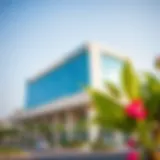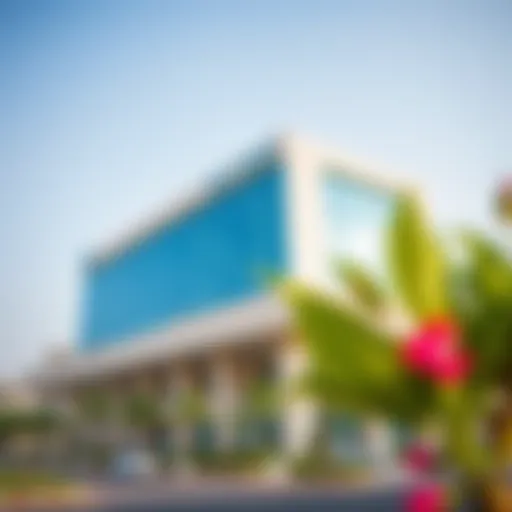An Exploration of Al Ain's Diverse Regions and Cultures
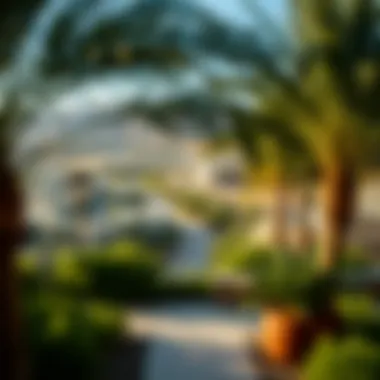
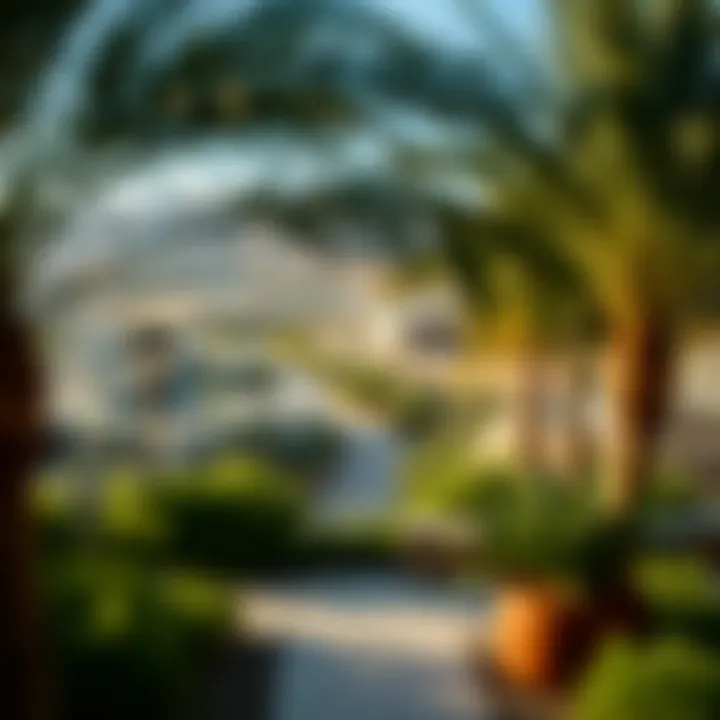
Intro
Al Ain, a hidden gem nestled in the heart of the Emirate of Abu Dhabi, presents an intriguing blend of tradition and modernity. Known as the "Garden City" for its lush greenery and rich agricultural heritage, it boasts a tapestry of regions each possessing its own unique character. Understanding these areas is not merely a pursuit for geography enthusiasts; it is imperative for investors, potential homeowners, and even seasoned travelers. The mix of historical significance and contemporary developments makes Al Ain a unique case worth exploring.
As we wander through Al Ain's diverse regions, it is essential to grasp how each area contributes to the cultural and economic fabric of the city. From bustling markets that echo tales of the past to modern residential developments, the landscape of Al Ain is a microcosm of broader Emirati life. This exploration aims to shed light on the multifaceted character of Al Ain—focusing on its demographics, real estate opportunities, community attributes, and so much more. The comprehensive insights presented will equip our readers with a nuanced understanding of Al Ain’s regions, whether they are looking to invest, relocate, or simply appreciate this vibrant locale in the UAE.
Preamble to Al Ain
Al Ain, often dubbed the "Garden City of the Gulf," holds a unique place in the heart of the United Arab Emirates. This oasis city is not just a picturesque location; it’s a melting pot of history, culture, and modern growth. As this article explores the various regions of Al Ain, it’s crucial to understand why the city warrants such attention.
One cannot overlook the amalgamation of traditions and contemporary influences that breathe life into Al Ain. Its landscapes are dotted with lush oases, craggy mountains, and endless desert, each telling tales of resilience and adaptability. Many areas retain their historical significance, while others reflect rapid developments over the past few decades.
In particular, investors and homebuyers will benefit from recognizing Al Ain's unique characteristics. With its rich heritage and forward-looking vision, the regions of Al Ain offer promising opportunities for real estate investment. This is not merely about buying property; it's about becoming part of a growing community that cherishes its roots while stepping confidently into the future.
Furthermore, understanding the city’s layout and its diverse districts aids in making informed decisions. The geographical distinctions impact everything from property values to lifestyle offerings. For instance, districts like Al Ain Oasis provide a serene environment, while areas such as Al Jimi buzz with commercial activities.
What’s striking about Al Ain is its adaptability, continuously merging the old with the new. Each district possesses its nuances, ensuring there’s something for everyone, whether you’re a potential buyer, a business investor, or simply a curious traveler.
Ultimately, a deeper dive into Al Ain’s regions offers invaluable insights into its urban fabric, enhancing one’s appreciation of what this city embodies. In the subsequent sections, we will detail the historical context, geographical features, and of course, the major districts that shape Al Ain. As a reader, equipping yourself with this knowledge sets the groundwork for navigating this intriguing city.
Historical Context
Al Ain, often referred to as the "Garden City of the UAE", holds a narrative rich with history that dates back thousands of years. Located near the UAE's border with Oman, this region has played a pivotal role in the cultural and economic development of the area. Its historical essence is vital for understanding the present-day landscape, making this section critical for anyone interested in investing or residing in Al Ain.
The Origins of Al Ain
The history of Al Ain is deeply intertwined with its geography. This city has long been a vital settlement due to its natural aquifers, providing fresh water in an otherwise arid desert landscape. Archaeological findings suggest that human habitation dates back to the Neolithic period, with evidence of ancient settlements scattered across the region. What’s more remarkable is that Al Ain contains several archaeological sites, including Hafeet Fort and the bewitching Jebel Hafeet Mountain, witnessing civilizations as they morphed through time.
This long-standing history has fostered a unique blend of cultures, contributing richly to its local customs and traditions. The area became a stop for traders traveling by camel, which established Al Ain as not just a city but an essential link in the trade routes.
Cultural Heritage and the Impact of Trade
The trade routes that passed through Al Ain allowed for a mingling of different cultures. This interaction has left an indelible mark on the city, molding its cultural landscape into a vibrant tapestry. As merchants and travelers intermingled, they introduced various crafts, culinary traditions, and social practices, effectively sprinkling a mix of histories and lifestyles throughout Al Ain.
Notably, the city has been a cornerstone for the Bani Yas tribe, the ruling family of the UAE, providing pivotal historical figures like Sheikh Zayed bin Sultan Al Nahyan, the founding father of the nation. Understanding this lineage is crucial for stakeholders looking to bridge the gap between modern developments and traditional lifestyles.
Preservation and Modern Context
In recent decades, there has been a concerted effort to preserve Al Ain's historical sites as the city evolves into a modern metropolis. The UAE's government has recognized the importance of maintaining its heritage amid rapid urbanization, unlike many parts of the world where history gets bulldozed for development. Programs aimed at conserving archaeological sites, such as the Al Ain Oasis, keep alive the region's historical significance for future generations.
"To grasp the present, one must understand the past. Al Ain is a living museum, where every brick tells a story."
This historical context not only enriches the cultural fabric of Al Ain but also presents a unique opportunity for investors who recognize the potential for cultural tourism. As Al Ain gears towards becoming a hub that balances modern living with historical reverence, it's clear that understanding its past is instrumental in guiding future developments.
Rightly so, by immersing oneself in the rich history of Al Ain, investors and homebuyers alike can make informed decisions that honor its legacy while contributing to its growth. The story of Al Ain is one of resilience, adaptation, and unity—an inspiration that echoes through its timeless landscapes.
Geographical Overview
Understanding the geographical framework of Al Ain is vital for grasping how the region has evolved over time and how it continues to adapt to modern needs. Geographical characteristics play a significant role in shaping the economy, community activities, and even the comfort of living in different areas. This overview will dive into the specifics of Al Ain’s landscape, exploring not just its appearance but how those features influence lifestyle, investment prospects, and local culture.
Topography of Al Ain
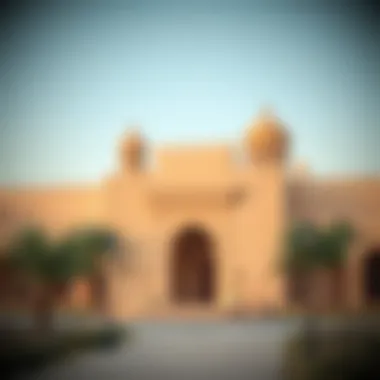
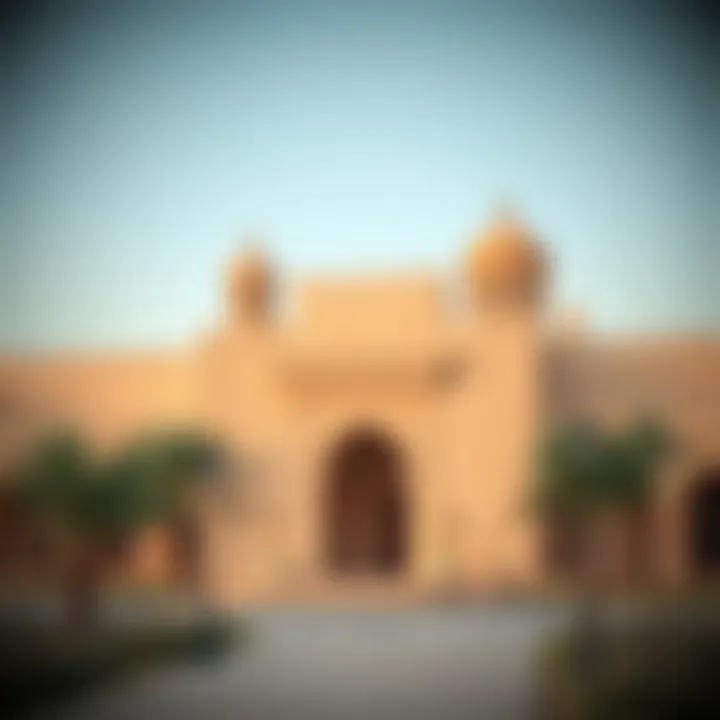
Al Ain is often referred to as the "Garden City" of the UAE, and that moniker stems from its lush greenery juxtaposed against the backdrop of rocky mountains and arid desert. The Hajar mountains flair out to the east, providing a dramatic contrast as they rise steeply. These elevations not only contribute to stunning vistas but also create microclimates that can be significantly cooler than the surrounding desert.
The city is interspersed with several oases, most notably the Al Ain Oasis, which plays a crucial role in the local ecosystem. The natural springs found here, the falaj irrigation system, and the palm groves offer a glimpse into traditional Emirati agriculture and sustainable practices. Residents enjoy gardens and parks, thanks to these water sources.
Overall, Al Ain's topography acts as a natural buffer against the desert, providing a comfortable environment for living and cultivating crops. It also presents several opportunities for real estate development that consider landscape orientation and views as integral selling points.
Climate and Environmental Factors
When considering relocation or investment, one cannot ignore the impact of climate in Al Ain. The region mostly experiences a hot desert climate, characterized by scorching summers that can send temperatures soaring above 40°C (104°F). Yet, the winters are mild and quite pleasant, with temperatures dropping to around 20°C (68°F).
The contrast in temperatures throughout the year creates unique challenges and opportunities. For one, building materials and designs must accommodate heat, prompting developers to incorporate efficient cooling techniques and insulation systems in their structures. Moreover, the limited rainfall averages only about 100 mm annually, making water conservation a priority for both residents and authorities alike.
"Understanding the climate is key to realizing the full potential of any investment in Al Ain, whether it be residential, commercial, or agricultural."
To combat the harshness of summer, many areas in Al Ain are designed with shaded walkways, cooling parks, and water features that can mitigate heat. Additionally, local government is increasingly promoting eco-friendly initiatives to tackle environmental concerns, including planting more greenery and utilizing renewable energy.
For further insight into the geography and environment of Al Ain, refer to these resources: Wikipedia - Al Ain, Britannica, or UAE Government.
Understanding these factors can provide a solid foundation for making informed decisions whether one is looking to invest or reside in this unique and historically rich region.
Major Districts of Al Ain
In the grand tapestry of Al Ain, the major districts stand as vibrant threads, weaving together a rich mosaic of culture, history, and socio-economic potential. Each district not only plays a crucial role in enhancing the identity of Al Ain but also offers investors and residents a unique window into the diverse lifestyle and opportunities this city presents. Understanding these districts is essential for anyone keen on exploring real estate prospects, cultural engagement, or community living in this remarkable region of the UAE.
Al Ain City
The heart of Al Ain, Al Ain City, brims with life and serves as a focal point for commerce and culture. It's a bustling hub where modernity meets tradition. Visitors can stroll through lush parks and visit historic forts, including the prominent Al Jahili Fort, a testament to the city's rich past. One significant characteristic of Al Ain City is its accessibility; it features extensive retail options and various dining experiences, making it a popular choice for residents and investors alike. Given the recent development of luxury residential spaces, the potential for property investment here is promising. Notably, the Al Ain Mall provides a central space for shopping and leisure, enhancing its appeal as a viable urban destination.
Al Jimi
Al Jimi is another key district, often considered a tranquil residential area. As families seek quieter environments, Al Jimi appeals because of its suburban charm paired with modern amenities. The district is particularly known for its variety of housing options, from villas to apartments. Local educational institutions, such as the Al Jimi School, enhance its attractiveness, especially for families with children. However, current investments in community infrastructure and recreational spaces are likely to increase its appeal further.
Al Muwaiji
In contrast, Al Muwaiji showcases a blend of residential and commercial establishments, making it a prime location for those wishing to capitalize on growing markets. Known for its strategic location near vital roadways, this district provides easy access to essential services and is popular among young professionals. Notably, the presence of several commercial businesses has made this area increasingly desirable for entrepreneurs and investors eyeing the thriving business scene. The Muwaiji Park serves as a lovely space for community gathering, promoting a sense of belonging and enhancing real estate values in the area.
Al Ain Oasis
Al Ain Oasis is not only a UNESCO World Heritage site but also represents the melding of history with environmental sustainability. This tranquil expanse of palm groves offers a unique escape from the urban hustle, making it a sought-after locale for those interested in eco-tourism and heritage. Its irrigation system, known as falaj, stands out as a fascinating historical feature. Investors can find opportunities among the many boutique hotels and eco-friendly lodges that cater to tourists drawn by this serene natural beauty and historical significance. Thus, the Oasis stands as a testament to the region's commitment to cultural preservation while promoting business avenues.
Al Dhahir
Moving over to Al Dhahir, its blend of residential and commercial properties provides a distinct flavor to Al Ain's overall real estate landscape. The district has seen steady growth thanks to its serene ambiance and abundant green spaces. A key attraction here is the Al Dhahir Park, where families gather for leisure activities. The property market in Al Dhahir has been on an upward trend, signaling a growing interest from homebuyers and renters searching for affordable yet quality living options. Its proximity to essential amenities adds to the district’s appeal as an ideal residential area for diverse demographics.
Other Notable Areas
-#### Al Salamat
Al Salamat is noteworthy for its community-centric design. The district boasts family-friendly neighborhoods that prioritize green spaces and communal activities. One of its highlights is the Salamat Community Centre, which is popular among residents for hosting various events and workshops. This strong sense of community combined with easy access to markets makes Al Salamat a favorable choice for families looking to settle down in Al Ain.
-#### Al Qattara
In Al Qattara, one finds a community steeped in arts and culture. Home to the Qattara Arts Centre, this district embraces creativity and cultural expression. Investing here is appealing due to the increasing demand for creative spaces and galleries. Al Qattara’s rich atmosphere not only draws artists but also families seeking cultural enrichment. Therefore, it stands out as a promising area for both residents and real estate opportunities.
-#### Al Wagan
Last but certainly not least, Al Wagan encapsulates rural charm with modern aspirations. Renowned for its agricultural contributions, residents often embrace a lifestyle tied closely to nature and sustainability. Al Wagan has witnessed a push toward developing eco-friendly homes, appealing to environmentally conscious buyers. The district's reputation as a calm retreat makes it attractive for those seeking a break from city life while still remaining connected.
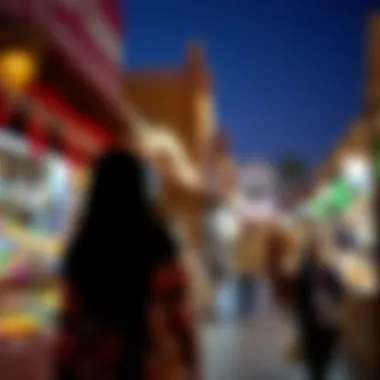

In summary, the major districts of Al Ain are filled with diversity, each contributing uniquely to the social and economic fabric of the area. Their individual characteristics provide investors and residents with ample opportunities, making them essential areas worth examining in depth.
Cultural Significance
In any region, the cultural significance often serves as the backbone of community identity and social dynamics. Al Ain, rich in cultural heritage, exemplifies this through its blend of tradition and modernity. This section aims to shed light on several distinct elements that contribute to the cultural significance of this vibrant region, particularly focusing on its educational institutions and efforts towards cultural heritage preservation.
Education and Institutions
Education in Al Ain is not just about textbooks and examinations; it's a blend of academic rigor and deep-rooted cultural values. The educational institutions here, ranging from primary schools to universities, place a strong emphasis on both scientific advancement and cultural education. The presence of notable institutions, such as the United Arab Emirates University, has attracted students from across the globe. This institution isn’t merely a place of learning; it’s a cultural melting pot where various nationalities come together, share ideas, and cultivate mutual respect.
Moreover, Al Ain’s commitment to educational excellence is reflected in its various community programs. These initiatives are pivotal in strengthening local culture. For instance, workshops focusing on traditional crafts, like date palm weaving, not only uphold local customs but also engage the younger generation in cultural practices.
- Benefits of Educational Institutions:
- Foster diverse learning environments.
- Promote cultural exchange among students.
- Ensure the preservation of local heritage through programs.
Cultural Heritage and Preservation
Cultural heritage is akin to the roots of a tree, grounding a society and giving it a sense of purpose and continuity. Al Ain is adorned with numerous museums, archaeological sites, and heritage villages, which act as tangible reminders of its past. The Al Ain Oasis, for instance, is a UNESCO World Heritage site, showcasing traditional falaj irrigation systems that have been in use for thousands of years. Such sites serve not only as tourist attractions but as educational resources that inform about historical agricultural practices, illustrating how the environment shaped the lifestyle of inhabitants.
The local government and various cultural organizations make concerted efforts to plate these historical narratives through festivals and cultural events, such as the Al Ain Culture and Heritage Festival. These events breathe life into Al Ain's rich past and continue to draw local and international visitors alike. The beauty of this rich background lies in its ability to connect generations and inspire pride in local culture.
"Cultural heritage is what unites us; it’s the bridge connecting our history to the future."
Furthermore, the preservation of cultural heritage is not solely reliant on institutions but involves community participation. Local families often engage in advocating for the arts and training new generations in traditional music, dance, and craftsmanship. This collective strive ensures that the soul of Al Ain remains vibrant, keeping the flames of history alive even while the world evolves around it.
The synthesis of education and cultural preservation cannot be overstated. The strength of Al Ain’s communities is reflected in their commitment to maintaining their rich traditions alongside embracing modernity.
Key Points to Remember:
- Al Ain's educational institutions balance academic growth and cultural heritage.
- Community involvement plays a critical role in preserving local heritage.
- Cultural festivals reinforce the ties between past and present, attracting interest and investment.
The intricate web of educational establishments and cultural preservation efforts infuses Al Ain with a unique character, drawing investors and visitors alike who seek to understand and appreciate this remarkable place.
For further reading on the cultural significance in the UAE, you can explore Wikipedia or Britannica for a more in-depth view.
Economic Landscape
Examining the economic landscape of Al Ain is vital to understanding the region's overall prospects and appeals, especially for those interested in investment or living there. This area stands out in the UAE for its blend of modernity and tradition, creating unique opportunities in the real estate and business sectors.
Al Ain's economic framework is influenced by several factors, including its geographical positioning, cultural richness, and the ambitious developmental plans laid out by local authorities. The region, often referred to as the
Transportation and Accessibility
Transportation and accessibility play a critical role in shaping the daily lives and economic activities of any region. In Al Ain, a city rich in history and culture situated in the United Arab Emirates, the ease of movement has significant implications for residents, businesses, and visitors alike. This section highlights the various avenues of transportation available in Al Ain, including public transport options and road infrastructure, emphasizing their relevance in enhancing connectivity and stimulating growth.
Public Transport Options
Al Ain is actively working to enhance its public transport system, making it more efficient and user-friendly. While many residents prefer private vehicles for daily commutes, public transport remains a reliable alternative for those seeking cost-effective travel options.
- Buses: The most prominent form of public transport in Al Ain is the bus system, which connects key districts and areas efficiently. The buses are generally well-maintained and operate on a fixed schedule, providing a predictable option for commuters. Routes cover major landmarks such as Al Ain Oasis and Al Jimi Mall, making essential services easily accessible.
- Taxis: Taxis are a convenient option for those needing door-to-door service. They can be hailed on the street or booked through mobile applications. Some local taxi services offer fixed fares for common routes, which can be beneficial for tourists who may not be familiar with the area.
- Ride-Sharing Services: In recent years, ride-sharing platforms have started to gain traction within Al Ain. These services provide an additional layer of flexibility and can be particularly useful later in the evening or in less accessible parts of the city.
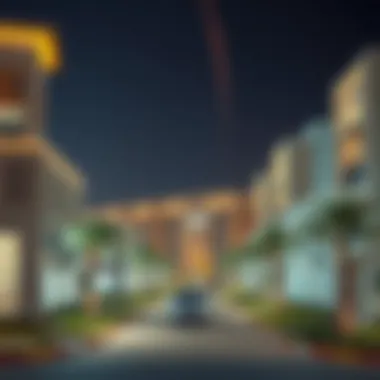
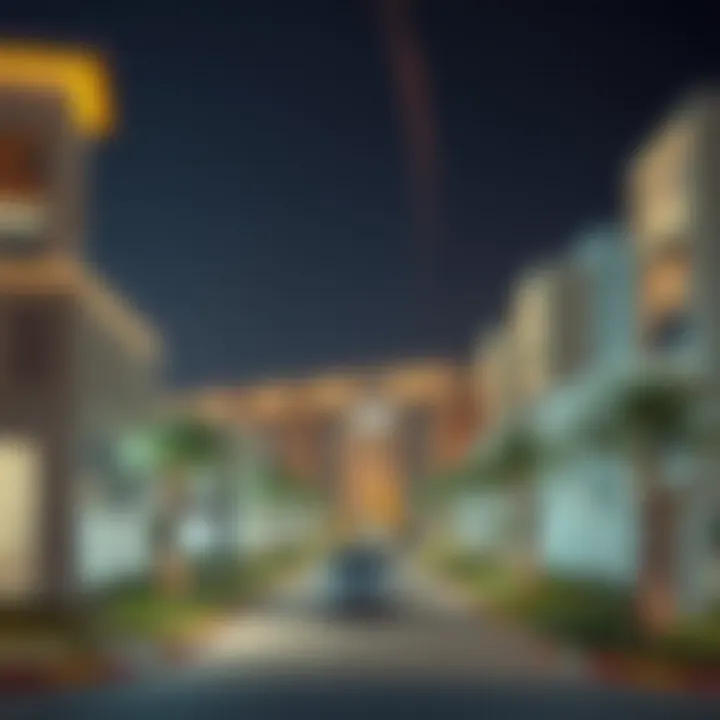
Utilizing these public transport options not only alleviates traffic congestion but also promotes sustainable practices in the region. For those considering investing or relocating in Al Ain, understanding these systems is crucial for making informed decisions.
Road and Highway Infrastructure
The road and highway infrastructure in Al Ain is robust and well-planned, which is vital for the city's connectivity to other parts of the UAE. Here are some noteworthy aspects:
- Major Roads: The city is interlinked through key roads like Abu Dhabi-Al Ain Road and Oman Road, facilitating smooth transit to neighboring cities. This connectivity is essential for business operations, particularly for industries reliant on logistics and distribution.
- Development Projects: Recent infrastructure development initiatives are aimed at expanding and modernizing existing road networks. For instance, the upgrade of the Abu Dhabi-Al Ain Road is a significant project that enhances not only traffic flow but also safety. This has implications for real estate values as ease of access elevates desirability.
- Traffic Management Systems: Al Ain is implementing smart traffic management systems to monitor and manage traffic conditions in real-time. These systems play a crucial role in reducing bottlenecks, particularly during peak hours, which in return benefits not only commuters but also businesses reliant on timely deliveries.
"A well-planned transportation system not only enhances quality of life but also serves as a backbone for economic development."
Furthermore, the relative ease of accessing Al Ain from Dubai and Abu Dhabi makes it an appealing location for investors and homebuyers alike. With these various transportation options available, Al Ain stands out as a city poised for growth, offering potential for further development and enhanced community interactions.
For more information on the transportation infrastructure in Al Ain, you may visit Al Ain City Official Portal and related resources.
Community Facilities
Community facilities serve as the backbone of any thriving region, playing a critical role in enhancing the quality of life for residents. In Al Ain, these amenities not only reflect the cultural and social fabric of the area but also contribute to its overall development. The presence of well-planned community facilities can attract investors and prospective homebuyers alike. When assessing the allure of Al Ain, one must consider how healthcare services and recreational spaces intertwine to create a vibrant community.
Healthcare Services
Access to quality healthcare services is paramount for residents' peace of mind and well-being. In Al Ain, healthcare facilities are strategically located across various districts, ensuring that no one is too far from essential medical care. The city is equipped with modern hospitals, such as the Al Ain Hospital and Sheikh Khalifa Medical City, which cater to a wide range of health concerns.
Moreover, the government places a strong emphasis on preventative care and public health initiatives, which translates into numerous health clinics and wellness centers scattered throughout the city. This network doesn't just offer routine check-ups or emergency services; it also provides specialized care, mental health support, and maternal care services.
A notable aspect is the integration of traditional medicine within the healthcare system, reflecting Al Ain's deep cultural roots. Many facilities offer alternative treatment methodologies alongside conventional medicine, presenting diverse options to the community.
"Community health facilities in Al Ain ensure that comprehensive care is accessible, pushing the envelope in both health and wellness for residents."
Recreational Spaces
Recreational spaces in Al Ain are more than just parks; they embody the spirit of community interaction and leisure activities. These areas provide a much-needed respite from daily routines, encouraging residents to engage in outdoor activities. The Al Ain Oasis is particularly noteworthy, offering sprawling landscapes filled with verdant palms and cooling shade—ideal for leisurely walks or picnics.
Furthermore, the city features facilities like Al Ain Zoo and various sports complexes, showcasing a commitment to both wildlife conservation and athletic pursuits. Children can find enjoyment in numerous playgrounds, while adults might favor jogging tracks and sports fields scattered around the community.
The cultural significance of these recreational spaces cannot be understated. They serve as gathering points for festivals, events, and activities that strengthen community bonds and promote cultural exchange. The mix of entertainment and nature fosters an environment where individuals can unwind and connect, which is vital for mental well-being in today's fast-paced world.
Investors and developers should see these attributes as integral to their considerations. The presence of well-appointed recreational facilities often translates to higher property values, drawing in families who prioritize lifestyle over mere housing.
In sum, the community facilities in Al Ain, especially in terms of healthcare and recreational opportunities, are essential components of the region's appeal and functionality. With a concerted approach to community development, these areas lay the groundwork for a fulfilled and health-conscious lifestyle.
Culmination
In wrapping up this examination of Al Ain’s varied regions, it’s vital to recognize how the tapestry of historical significance, cultural richness, and economic potential intertwine to present a comprehensive narrative of this remarkable city. From the bustling streets of Al Ain City to the serene landscapes of Al Ain Oasis, each area offers distinct attributes that cater to diverse stakeholders, be it investors scouting for lucrative opportunities, or families seeking tranquil residences.
Importance of Understanding Al Ain's Regions
Understanding the nuances of Al Ain's regions goes beyond mere geography. It unlocks avenues for investment, community engagement, and cultural enrichment. For investors, navigating through the city's real estate market requires an appreciation of demographic trends and local infrastructures. A deep dive into districts like Al Jimi and Al Muwaiji reveals the potential for growth and community development.
Moreover, having knowledge about public transportation and accessibility routes allows investors to make informed choices about property purchases. Aspects like the proximity to educational institutions and healthcare services become critical in determining property value and appeal to homebuyers. Investing isn't merely about numbers; it's about envisioning the lifestyle that a region can provide.
Key Takeaways
- Unique Offerings: Each district encapsulates its charm, making them suitable for various lifestyles and investments.
- Historical and Cultural Values: Tackling the importance of heritage helps land developers understand the landscape better, influencing sustainable project designs.
- Economic Landscape: A thorough grasp of Al Ain’s economic conditions and real estate trends fosters better investment strategies.
"Knowledge is power; this rings especially true when it comes to navigating the vibrant landscapes of Al Ain. It prepares you to make prudent decisions across multiple fronts."
In summary, this article not only offers insights into Al Ain’s geographical regions but also serves as a roadmap for stakeholders. The interrelationship between the districts lays a strong foundation for potential growth and enrichment, making Al Ain a city worth exploring further, whether through the lens of investment or as a future home. As Al Ain continues to evolve, remaining informed about its regions will empower individuals and organizations alike to thrive in this dynamic environment.
Engagement with Al Ain promises expansive rewards for those willing to dive deep into its rich offerings.






